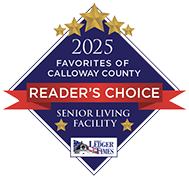Key Takeaways
- Senior living communities provide built-in social connections and safety features that are difficult to replicate at home.
- The hidden costs of staying home often exceed the transparent pricing of retirement communities.
- Professional support and emergency response systems offer peace of mind for you and your family.
- Community living provides access to health, wellness, and specialized care services as your needs evolve.
Choosing Between Staying Home and Senior Living
You’ve reached a crossroads many people face as they enter their retirement years. The home you’ve loved for decades feels familiar and comfortable, but you’re starting to wonder if it still serves your changing needs. Understanding what to look for in a senior living community can help guide your decision.
While both options have their merits, senior living communities typically offer more comprehensive support, social engagement, and long-term value than staying in your current home. This decision affects not just your daily comfort, but your safety, health, and overall quality of life in the years ahead.
Understanding Your Housing Options as You Age
What Independent Living Communities Offer
Independent living communities provide you with your own private apartment or home while offering access to shared amenities and services. You maintain your autonomy while having support available when you need it. These communities typically include dining options, housekeeping services, and transportation assistance—all designed to simplify your daily routine.
Many communities also offer independent living options that can evolve with your needs. If your health changes, you might transition to personal care services without having to move to an entirely new location.
The Reality of Aging at Home
Staying in your current home means managing all aspects of homeownership while your physical abilities may be changing. You’ll need to handle maintenance, repairs, and modifications to keep your space safe and accessible. The responsibilities that once felt manageable might become overwhelming as time goes on.
Your neighborhood may also be changing around you. Friends might move away, local services could become less accessible, and the community connections you once enjoyed may gradually fade.
Why This Decision Matters More than You Think
This choice impacts every aspect of your daily life—from your social connections to your access to healthcare. The decision you make today will influence how you experience the next chapter of your life.
Your housing situation affects your family, too. They want to know you’re safe and supported, and your living arrangement directly impacts their peace of mind and level of involvement in your care.

Social Connection and Community: Where Senior Living Shines
Fighting Isolation and Loneliness at Home
Staying home can lead to increased isolation, especially if mobility becomes challenging or friends move away. Daily interactions might become limited to brief exchanges with delivery drivers or neighbors you occasionally encounter. Research on social interactions and happiness shows the importance of meaningful connections for overall well-being.
Without regular social engagement, you may find yourself feeling disconnected from your community. This isolation can affect your mental health and overall well-being in ways you might not immediately recognize.
Built-In Social Activities and New Friendships
Retirement communities create natural opportunities for social interaction through shared meals, group activities, and common spaces. You’ll meet people who share similar interests and life experiences, making it easier to form meaningful friendships.
These communities often organize outings, cultural events, and hobby groups that introduce you to new experiences and help you discover interests you never knew you had. The variety of activities and events means there’s always something happening that matches your preferences.
How Community Living Supports Mental Health
Regular social interaction and engagement can significantly impact your mental well-being. When you’re surrounded by an active community, you’re more likely to stay engaged and maintain a positive outlook.
Having neighbors nearby who check in on you and share daily experiences creates a support network that extends beyond your family. This sense of belonging can be particularly valuable during challenging times.
Safety and Security Considerations for Your Future
Emergency Response When You Need It Most
Senior communities typically provide emergency response systems that connect you to help within minutes. Whether you experience a medical emergency or simply need assistance with something unexpected, support is always available. Learning about safety and security features can help you understand what protection is available.
At home, you might wait hours for help to arrive, especially if family members live far away. This delay can be dangerous in emergency situations where time is critical.
Home Safety Modifications and Their Costs
Making your current home safer as you age can involve expensive modifications like installing ramps, grab bars, stair lifts, and accessible bathrooms. These changes can cost thousands of dollars and may not address all potential safety concerns.
Even with modifications, your home might not provide the same level of safety as a community designed specifically for older adults. Professional staff trained to recognize and respond to health concerns can spot issues before they become serious problems.
Transportation Solutions Beyond Driving
Many senior communities provide transportation services for shopping, medical appointments, and social outings. This service becomes invaluable when driving is no longer safe or comfortable for you.
Staying at home without reliable transportation can lead to missed appointments, social isolation, and difficulty accessing necessary services. Public transportation or ride-sharing services might not be convenient or accessible in your current neighborhood.
The Real Cost Comparison: Home vs Retirement Community
Hidden Expenses of Staying Home
The costs of staying home extend far beyond your mortgage or rent. You’ll need to budget for increasing maintenance, potential home modifications, housekeeping services, and possibly in-home care as your needs change.
Utilities, insurance, property taxes, and emergency repairs can create unpredictable expenses that strain your budget. These costs often increase over time, making it difficult to plan your finances effectively.
What’s Included in Senior Living Costs
Senior community fees typically cover housing, utilities, meals, housekeeping, maintenance, and many activities in one predictable monthly payment. This all-inclusive approach makes budgeting easier and eliminates surprise expenses.
Many communities also include services like transportation, fitness programs, and social activities that would cost extra if you arranged them independently. The value of these included services often exceeds what you’d pay separately.
Value of All-Inclusive Community Living
When you calculate the total cost of staying home with necessary services versus community living, the retirement community often provides better value. You receive professional support, social opportunities, and peace of mind for a comprehensive monthly fee.
The predictable costs also help you plan your long-term finances more effectively, protecting your savings from unexpected home-related expenses that can quickly add up.
Health and Wellness Support as You Age
Access to Fitness Programs and Activities
Retirement communities typically offer fitness programs designed specifically for older adults, including gentle exercise classes, walking groups, and strength training. These programs help you maintain your physical health and mobility. The National Institute on Aging provides extensive information about safe exercise options for seniors.
At home, you might struggle to find age-appropriate exercise options or motivation to stay active. The structured programs and social aspects of community fitness make it more likely you’ll maintain an active lifestyle.
Nutritious Meals Without the Cooking
Many communities employ registered dietitians who plan nutritious, delicious meals that meet your changing dietary needs. You can enjoy restaurant-style dining without the planning, shopping, or preparation.
Cooking for yourself at home can become challenging, leading to poor nutrition or reliance on processed foods. Community dining ensures you receive proper nutrition while providing social interaction during meals.
Memory Care and Dementia Support Options
If you develop memory loss or cognitive changes, many communities offer specialized memory care services. These programs provide structured support while allowing you to remain in a familiar environment.
At home, managing dementia care requires extensive family coordination and professional services that can be expensive and difficult to arrange. Communities with memory care expertise can provide seamless transitions when additional support becomes necessary.
Making the Move: Your Next Steps Forward
When to Start Exploring Retirement Communities
The ideal time to explore senior living is while you’re still healthy and able to make decisions without pressure. This allows you to choose a community based on your preferences rather than your immediate needs.
Starting your search early also gives you time to visit multiple communities, ask questions, and make an informed decision. Waiting until a crisis occurs limits your options and adds stress to an already challenging situation.
What to Look for During Community Tours
Pay attention to how residents and staff interact with each other. Look for genuine warmth and engagement that indicates a caring community culture. Ask about the activities and services that matter most to you.
Consider the community’s approach to changing needs. Communities that offer multiple levels of care can provide continuity as your requirements evolve, eliminating the need for future moves.
How to Start the Conversation with Family
Include your family in your decision-making process by sharing your research and concerns about aging at home. Help them understand that choosing senior living is a proactive decision that can enhance quality of life.
Focus on the positive aspects of community living—the social opportunities, safety features, and support services that will help you thrive. Your family wants to know you’ll be happy and well-cared for in your new environment.
Discover Compassionate Support and Vibrant Living at Hickory Woods
At Hickory Woods Senior Living, we understand this decision represents a significant step in your life journey. Our compassionate team is here to answer your questions and help you explore how our community might support your goals for retirement life. We invite you to schedule a tour and see firsthand how our residents enjoy vibrant, supported living in a welcoming environment designed with their comfort and dignity in mind.


